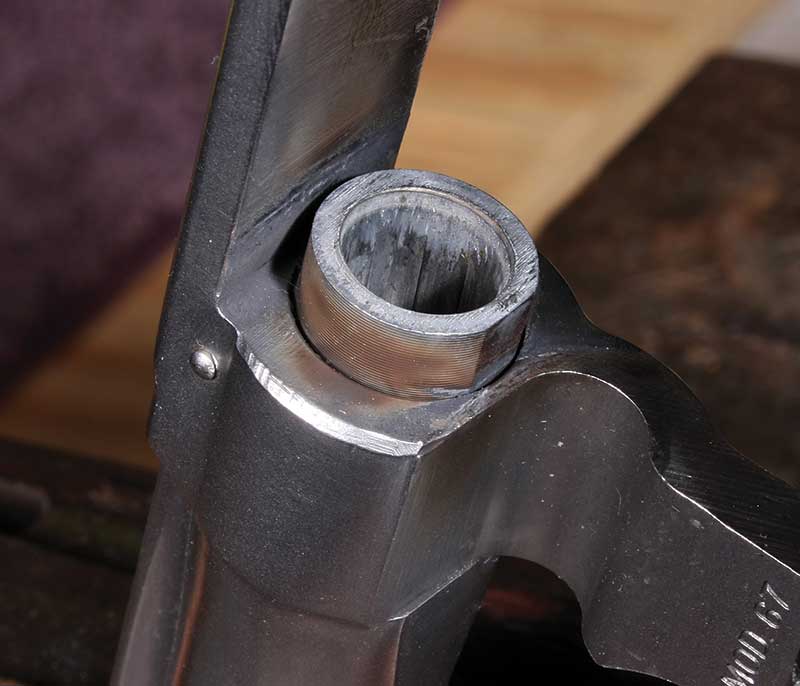Wheelgun Wherewithal
The column I did on basic cleaning tips for autopistols (“The Opposite Of Dirty,”) is continuing to get positive comments, and the related video has been watched by a bunch of shooters. It seems my sorta’ lazy-guy gun-cleaning concept struck a chord. Many of you have also asked if I could touch on how to best handle cleaning chores for a revolver. Frankly, that warms my heart because it means there are still legions of revolver shooters out there! As our own Clint Smith says, “Wheelguns are realguns!”
Not saying I’m any kind of an expert — just to make that clear, mind you — I’ll still admit to nearly 50 years of gun cleaning behind me, with many people along the way showing me tips and ideas about how to do it better and smarter. Taking advantage of those good ideas and what I’ve learned stumbling around on my own, I’ve come up with a few very easy, very basic techniques to keep this sometimes onerous chore under control.
Rendering A Revolver
The basic idea is the same for any firearm: Before you get out any oils, solvents or miracle cures, get as much crud off as you can with “dry” brushes and a clean cloth. Many revolvers allow you to remove the cylinder from the frame, then slip it off the “crane” it rides on. That makes it handy to clean it. Also, I’d take the grips off so you can get at any sweat that might have crept under ’em while you squeezed your sixgun in a death grip on the range.
If you don’t know how to get the cylinder off, I’ll bet you can nose around the Internet or ask a good buddy who might know how. Just make sure you use a correctly fitted screwdriver specifically made for gun screws, not the 99-cent “Screwdriver Ten-Pack!” you got at the Dollar Store. Trust me on this, or start practicing saying things like, “$%#&@#!!!” now.
Pay particular attention to the face of the breech (back where the firing pin come out), the front of the cylinder and the beginning of the barrel around the forcing cone (the part that sort of squeezes the bullet into the barrel). You’ll get plenty of crud there since there’s an open gap. If you shoot lead, you may even need to resort to scraping it off here and there with a piece of sharpened brass dowel, or dry bronze brush or something. Watch using a knife, razor, etc. as they can leave gouges and scratches. Once as much of the crud is removed as possible on the gun using the “dry” process, get a bore brush and wet it with your favorite solvent.
Run that brush through the bore, and into each chamber, using plenty of solvent. Then get your handy, bronze toothbrush thingy and run it over the front of the cylinder, the breech face area, forcing cone and any other bit where crud is stuck. Set everything aside to cook for a few minutes — and find your electric drill.
Chances are good if you’re shooting lead, you’ll have lead buildup in the cylinder and bore. You can saw-away at it with a bore brush, or use a nifty thing like a Brownells’ Lewis Lead Remover; but you can also make fast work of it by simply chucking an old bore brush in a drill for the chambers. Put the padded cylinder in a vise if you have one handy. Slip the brush into a chamber in the cylinder from the back but don’t run it all the way through. The goal here is to push the front portion of the brush into the stepped area near the cylinder front, but not the entire brush since it will smash it down and then it won’t be very good for the part of the chamber holding the case. Wipe out the chamber with a clean patch and see how things look. Repeat as required.
And no, don’t use the electric drill idea in the barrel! Don’t laugh, I’ve seen it and it’s not pretty, especially with hard stainless steel brushes. Just use that bronze bore brush, solvent and some elbow grease. Some J.B. Bore Cleaner (an abrasive pasty goo, also from Brownells) makes the job go faster. Follow that with plenty of clean patches in the bore and chambers (the first few with a bit of solvent to get the goobers out), a final wipe down with a clean dry rag to get the odds and ends, and you’re done. If it’s a blued gun, feel free to use a final wipe with something to protect it. My new favorite is the Rusty’s Rags setup (page 105 in the May/June issue has a review), but anything made to protect a blued surface will work fine.
Screw the grips back on and reassemble the cylinder. A drop or two of light oil where you think it needs it on the cylinder assembly doesn’t hurt, but other than that, leave the lube alone. If you’ve used a spray de-greaser to get sand or grit out of the action you’ll have to re-lube the innards, but be discrete with the oil as it can really collect dust and such. There’s way more complicated ways to do all this, but you simply don’t need to. I used this method once or twice a week when I was shooting about two thousand rounds of .38 wadcutters (messy!) through a Model 19 every week, and it kept things hunky dory.

Get More Revolver Content Every Week!
Sign up for the Wheelgun Wednesday newsletter here:






